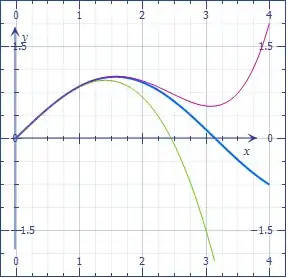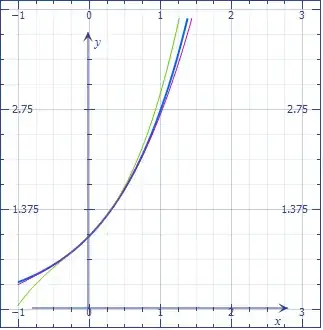Introduction (can skip). This answer aims at producing a solution which rely on as less knowledge as possible. This does not necessarily mean that this solution is easy. Indeed, if we allow more advanced tools, then much shorter proofs are available. Here are some examples:
Integrating $-1 \leq \sin(x) \leq 1$ four times yields $-\frac{x^4}{4!} \leq \sin(x) - \big( x-\frac{x^3}{3!} \big) \leq \frac{x^4}{4!}$. This immediately yields the limit via squeezing.
Using $\limsup$ and $\liminf$, we can bypass the question of existence of limit. This allows to directly adopt the arguments in this answer.
Not to mention, L'Hospital's rule or Taylor's theorem gives a one-liner proof.
Solution. In this answer, we will only use following properties of trigonometric functions.
$\text{(P1)} \ $ $0 \leq \sin x \leq x \leq \tan x$ for any $0 < x < \frac{\pi}{2}$.
$\text{(P2)} \ $ $\sin(2x) = 2\sin(x)\cos(x)$ and $\cos(2x) = 1 - 2\sin^2(x)$.
$\text{(P3)} \ $ $0 < \cos(y) \leq \cos(x) \leq 1$ for $0 < x < y < \frac{\pi}{2}$.
$\text{(P4)} \ $ $\sin(-x) = -\sin(x)$.
Define $f(x)$ by
$$f(x) = \frac{x - \sin(x)}{x^3}$$
for $x \neq 0$. From $\text{(P4)}$, we have $f(-x) = f(x)$ and hence it suffices to examine the right-limit of $f$. We also write $\operatorname{sinc}(x) = \sin(x)/x$ for simplicity. By the double-angle formula $\text{(P2)}$,
\begin{align*}
f(x)
&= \frac{x - 2\sin(x/2)}{x^3} + \frac{2\sin(x/2)\left(1 - \cos(x/2) \right)}{x^3} \\
&\quad= \frac{1}{4}f\left(\frac{x}{2}\right) + \frac{\operatorname{sinc}(x/2)\operatorname{sinc}^2(x/4)}{8} \\
&\quad\quad \ldots \\
&\quad\quad\quad = \frac{1}{4^n}f\left(\frac{x}{2^n}\right) + \frac{1}{2} \sum_{k=1}^{n} \frac{\operatorname{sinc}(x/2^k)\operatorname{sinc}^2(x/2^{k+1})}{4^k}.
\end{align*}
Now assume that $x \in (0, \frac{\pi}{2})$. Then by $\text{(P1)}$ and $\text{(P2)}$,
$$ 0 \leq f(x) \leq \frac{\tan(x)-\sin(x)}{x^3} = \frac{\sin(x) (1 - \cos(x))}{x\cos(x)} = \frac{2\sin(x)\sin^2(\frac{x}{2})}{x^3\cos(x)} \leq \frac{1}{2\cos(x)}. \tag{2} $$
Also, by $\text{(P1)}$ and $\text{(P3)}$,
$$ 1 \geq \operatorname{sinc}(x/2^n) = \frac{\tan(x/2^n)}{x/2^n}\cos(x/2^n) \geq \cos(x). \tag{3} $$
Using $\text{(2)}$, $\text{(P3)}$, and $\text{(3)}$, we can bound each term in $\text{(1)}$ from above and below, for $x \in (0, \frac{\pi}{2})$. Indeed, we get
$$ \frac{1}{2\cos^3(x)} \sum_{k=1}^{n} \frac{1}{4^k} \leq f(x) \leq \frac{1}{4^n} \frac{1}{2\cos(x)} + \frac{1}{2} \sum_{k=1}^{n} \frac{1}{4^k}. $$
Since $f(x)$ is independent of $n$, letting $n\to\infty$ and using the geometric series $\sum_{k=0}^{\infty} r^k = \frac{1}{1-r}$ for $|r| < 1$ shows that
$$ \frac{1}{6\cos^3(x)} \leq f(x) \leq \frac{1}{6}. $$
By the squeezing theorem, $f(x) \to \frac{1}{6}$ as $x \to 0^+$. (Here, we used the fact that $\cos(x) \to 1$ as $x \to 0$, which itself can be proved from $\cos(x) = 1-2\sin^2(x/2) \in [1-\frac{x^2}{2}, 1]$ together with the squeezing theorem.)

